This July marked my third walk to Frenchmans Cap in 18 months. Each time I’ve stayed up there a little longer. Some might say I’ve developed a fondness for this trail; others would say it’s the comforts of the new hut, opened at Lake Tahune in 2018, that I’m fond of.
I’d be lying if I didn’t concede this played a part in drawing keen hikers like myself out into the Tasmanian winter; but the truth is, my fondness for this part of the world originates in something rather uncomfortable... More on that later.
My day job as senior curator at Hobart’s Museum of Old and New Art (Mona) sees me spend a lot of time thinking and talking about beauty – how we identify it, agree and disagree on where it exists, and how we take pleasure from it. When I get time away from work I like to spend it chasing beauty elsewhere; not in objects or ideas, but in nature. It may be by luck that I live and work here in Tasmania, but it’s not by accident, and after years of walking in the stunning Tasmanian summers, I have recently become obsessed with hiking during the often brutal winters.
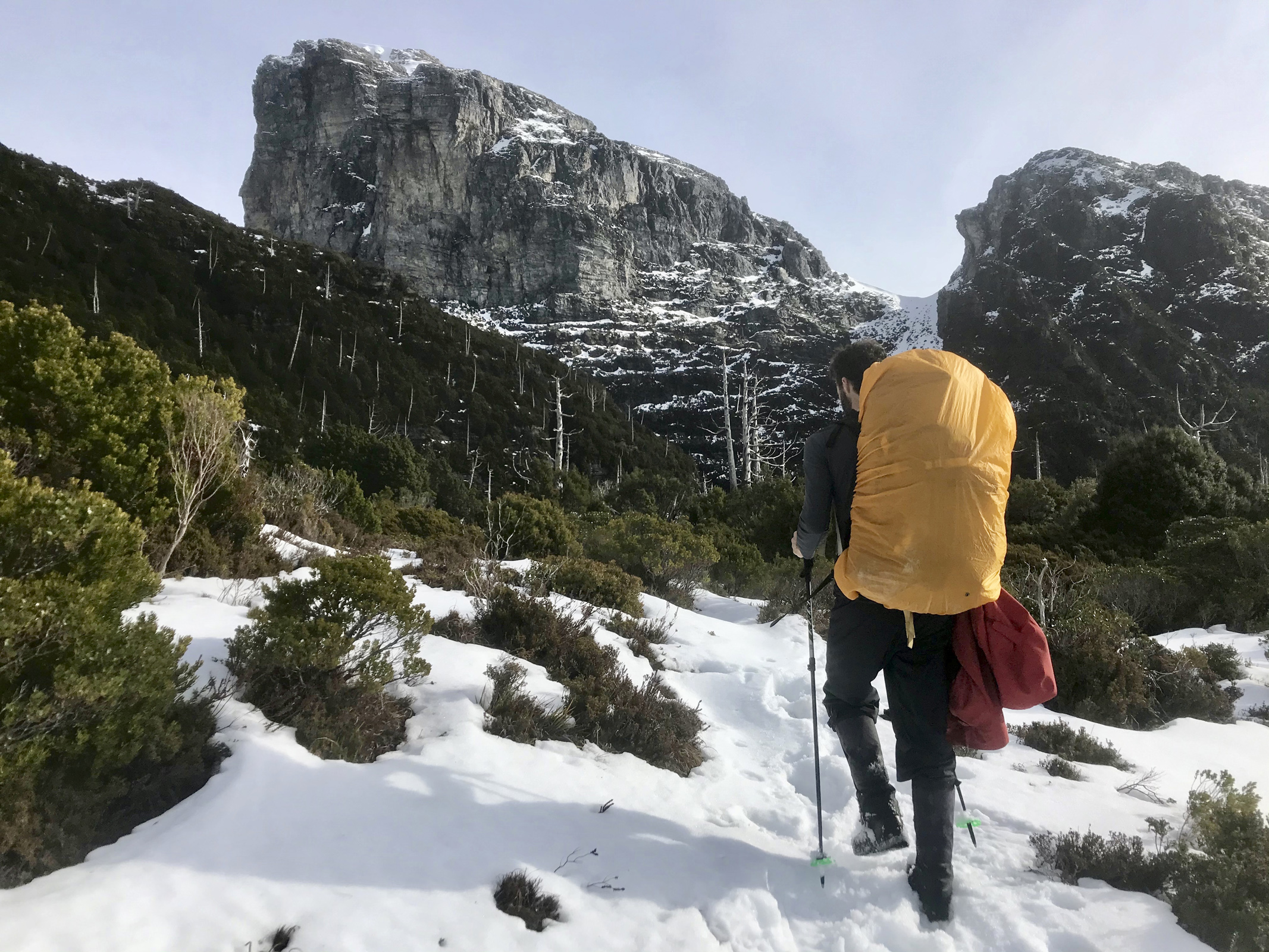


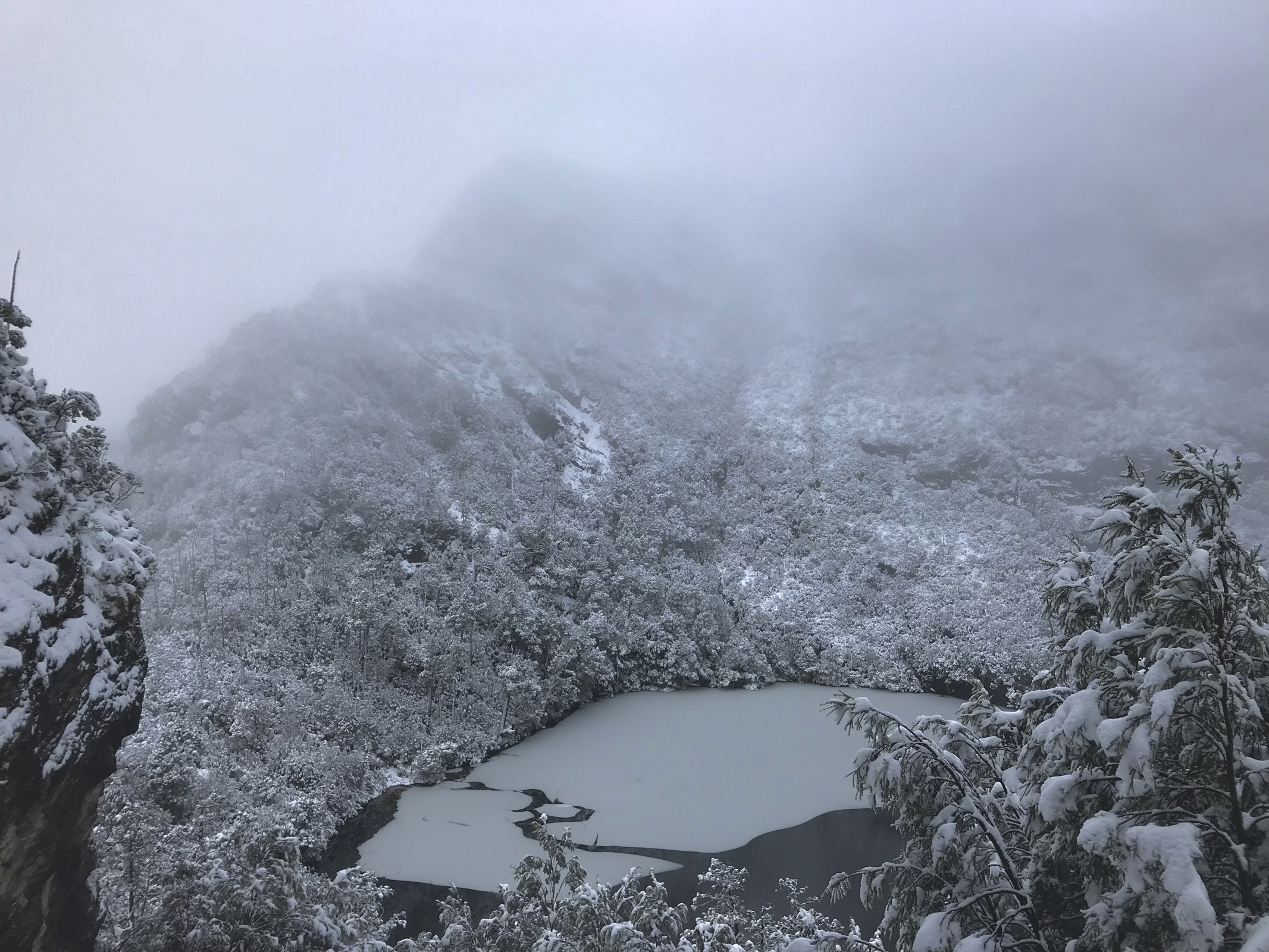
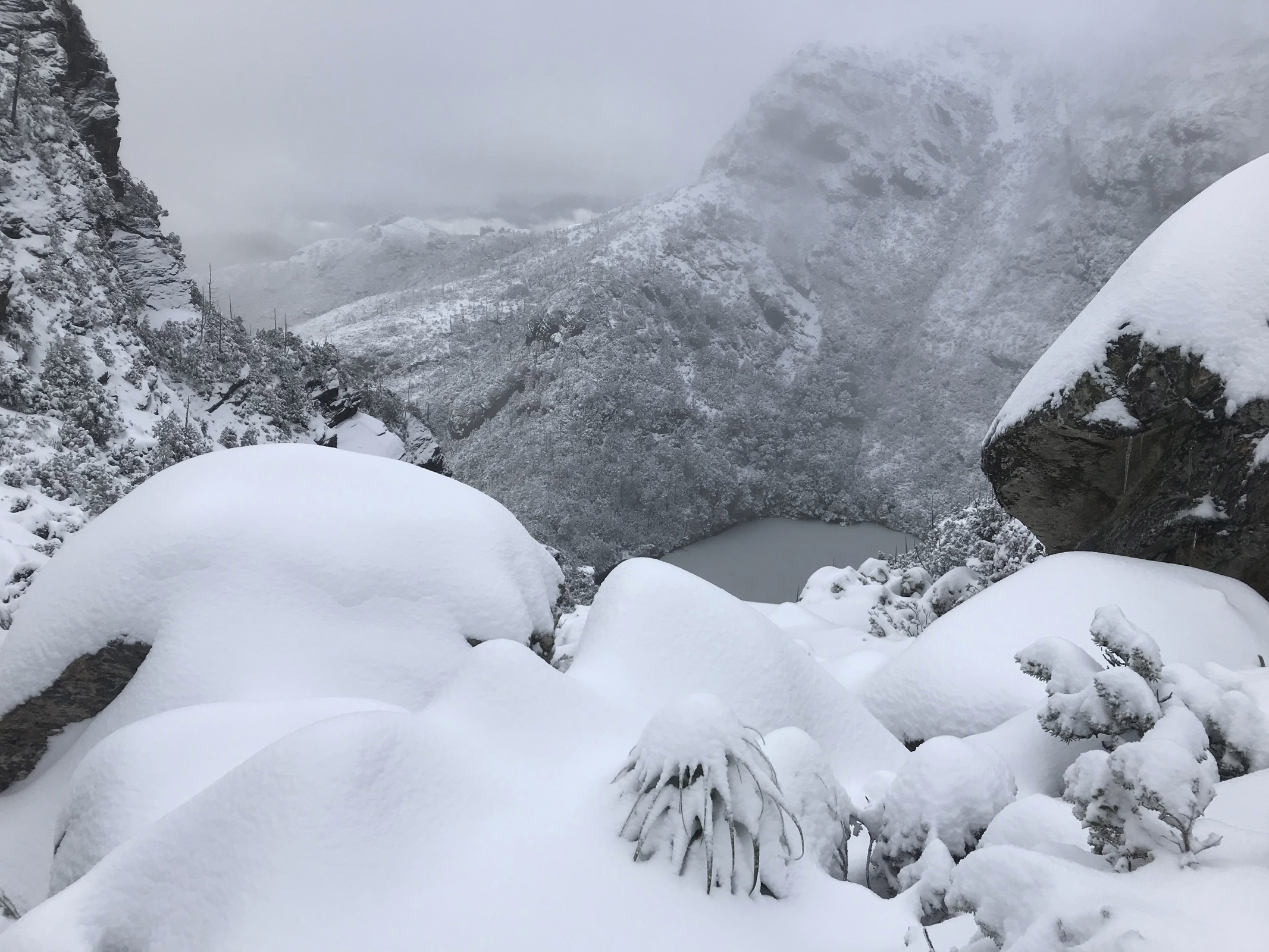
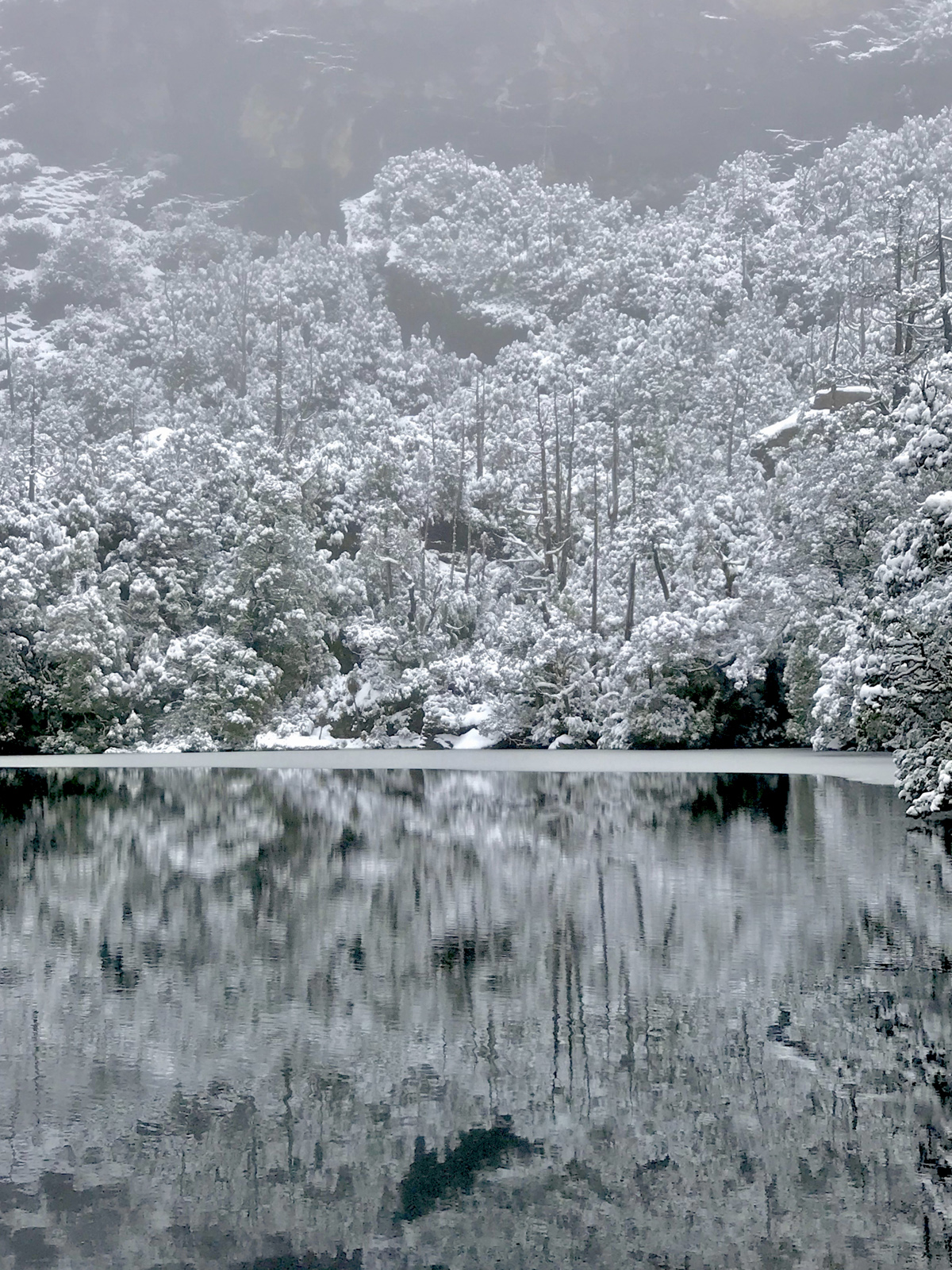

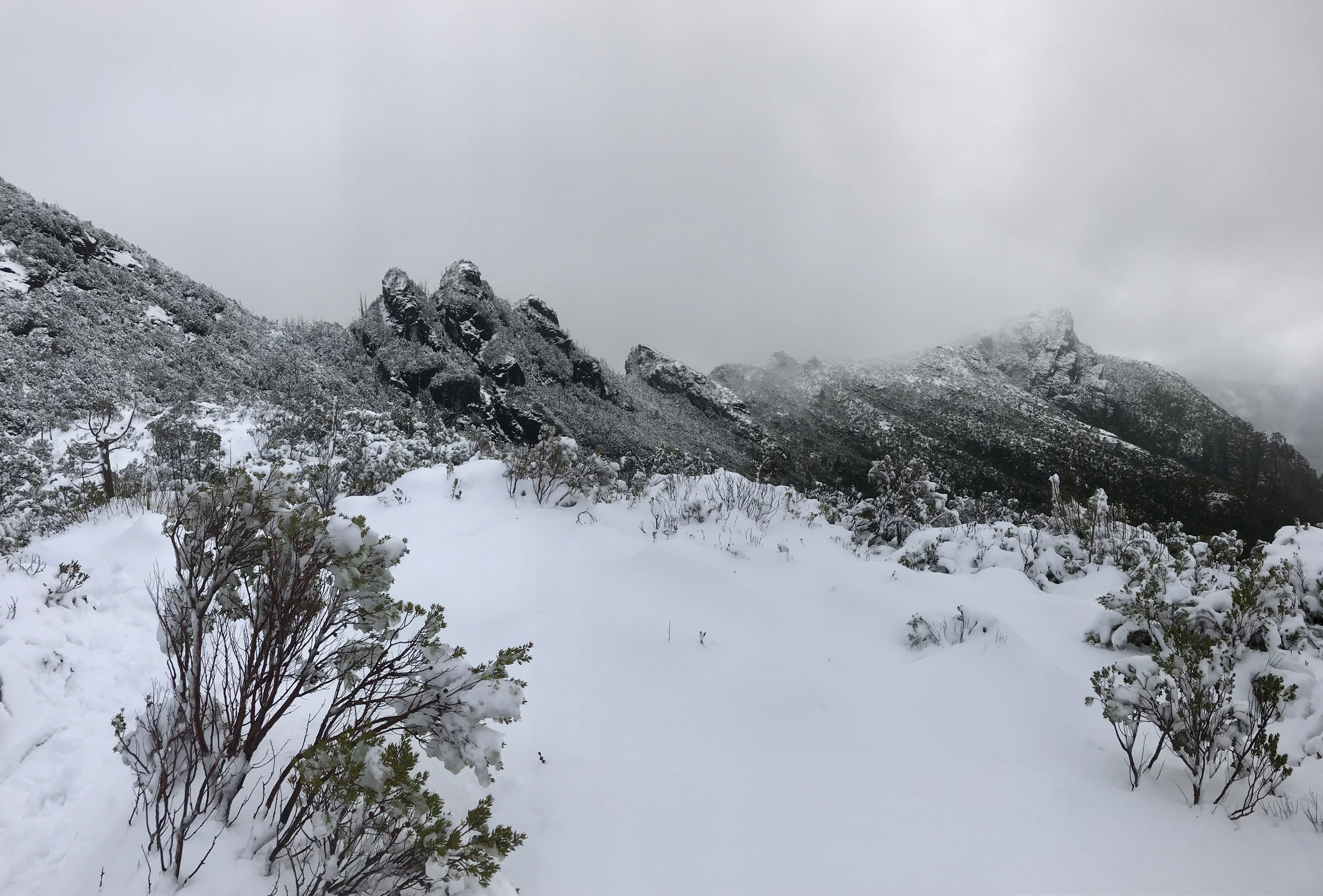
WELCOME TO WINTER
Frenchmans Cap was not my first winter alpine adventure. That was reserved for a freezing wet night bunkered down in the tent perched on Mount Anne’s Shelf Camp. Needless to say we only stayed up there for one night. As those of you who have walked down here know, the ever-changing weather can keep you on your toes – if you can still feel them, that is.
July 2018 was my first walk up ‘The Cap’, to chase the snow, and we were rewarded with plenty of it. July 2019 was our most recent excursion, with five of us setting off only a few days after Tasmanian Search and Rescue Services had successfully plucked missing and trapped hikers from the snow around the Overland Track area.
‘The Cap’ trailhead is at a carpark off the Lyell Highway, around a three hour drive north from Hobart (of course, only if the roads are open). From the carpark it’s a pretty gentle walk for 16 kilometres to the hut at Lake Vera. Here the recent track upgrades have replaced the infamous and devilish Loddon Plains crossing with a more pleasant experience. If you’re one for anecdotes from days past, of hikers up to their ears in mud, then most of the Frenchmans Cap history books and articles found in the huts will provide you with hours of entertainment.
Many head in and out of ‘The Cap’ in a day or two, but as we are out there primarily for pleasure, it’s a longer-the-better walking plan for us. Dawdling through the bush is the mantra for this trip. So night one at Lake Vera gives the group plenty of sleep for the climb up through Barron Pass and across Artichoke Valley the following day.
TOWARDS BARRON PASS
The weather is mostly fine, with the temperature hovering around 3 to 4 degrees overnight. The walk around Lake Vera up to Barron Pass is one of the most exquisite rainforest sections on any walk in Tasmania. The trail takes you through forest that is said to be more than 10,000 years old, with many of the fires over the past few hundred years not making it into this naturally protected section. It is inside this thick canopy that snow starts to appear on the dense forest floor. It’s a reminder of just how much snow has fallen recently; it takes a barrage to make it through this canopy.
Mt Read is commonly listed as the wettest place in Tasmania, with an annual rainfall of around 3600mm, but a recent government document suggests that ‘The Cap’ is probably the wettest, with an annual rainfall of approximately 4000mm, or around 20 days per month. This counter-intuitively brings about one of the greatest pleasures of this walk – not having to carry any water. A mug clipped on your harness will get you though.
By day two, the good weather and available time have us planning on nothing more complex than strolling through the bush at an easy pace. This unrushed march carries us through the scrambling involved to make it to Barron Pass. At the top there is no wind and not much cloud, with amazing views back towards Clytemnestra and the lake-filled valleys below.
After an incredible sunset, the cloud starts to come in, as it does up here. I watch little birds popping about at the door of the hut; Tasmanian Scrubtits. I have the thought, that their ability to live up here, to seamlessly withstand the changing and unfriendly conditions, to find food and suitable shelter, makes these little birds far more sophisticated and intelligent beings than what we have become. I reflect on our continually evolving neediness as I head back into the hut to recharge my book at the USB power outlet.
THE LOWERING LOW
At 6:00am we wake in dark cloud, rain and sleet. It seems a low is still coming across from the South West. After a few days of good weather, we are back to what I foresaw, which is not being able to see the summit, or anticipate the weather in any way.
There is a lot of snow melt running down from The Cap into Lake Tahune, forming hundreds of waterfalls, all constantly changing in size. For a while we watch the wind invert a recently formed waterfall back toward the sky. Strong winds and a permanent veil of cloud make the North Col and summit invisible to us, forcing us to stay put for a while longer.
Chris re-packs his pack, again; Mike reads a book about the history of Frenchmans Cap. Together we are confident the low will get lower and more snow will fall, before the clouds lift and we have the opportunity to summit.
All I am focused on is the ancient beauty of this area: the pines and Pandanis, the lakes and quartzite faces, the birds. But when it becomes coated in a fine dusting of snow, this beauty is exaggerated through the contrast of green on white and the incredible vertical rock walls emerging out of white blankets.
Sitting up here, about 1000m under the majesty of The Cap, makes for a remote and peaceful time. All the activity of manmade beauty is absent in a way that cannot be compared to other, more shallow moments of detachment.
Frenchmans’ is not a smug and privileged beauty; it is just different to what one experiences most days at home. Trying to make sense of it, I could theorise on the obvious physical differences between here and there, but what would be the point? It is the less obvious comparisons that reveal what the real beauty up here is for me.
If I did make that superficial comparison, I would learn that the peaceful green and wet beauty of alpine Tasmania is more beautiful than a busy city street. So then what of the terrible and unpredictable weather up here, when just walking to the toilet seems like a chore, and you struggle to brush your teeth because you can’t feel the tips of your fingers?
There is not a lot that is immediately beautiful about those situations. Yet for some reason I think there is, and I still don’t know why.
ATTACKING THE SUMMIT
After lunch the cloud and wind and sleet lift a little. When I say ‘a little’, I mean ‘not really at all’, but we’ve been sitting in the hut waiting for a change for long enough, and besides, I can’t face the prospect that Chris might re-pack his pack, again, out of sheer boredom. So we agree to take a walk towards the summit.
Heading up the summit track the snow is easy going, compared to the previous winter. At the summit turn off we decide the drift snow we can just make out looks pretty precarious, so we head up the North Col to get another view of the amazing Lion Head emerging out of the blizzard above us. The snow is soft and falls away, which makes progress up the Col slow-going. On top of this we can see the wind above is pretty hectic, but we’re too high to turn back, so we climb out into the blizzard.
We had read about an alternative route to the summit, an early nineteenth century route. This dubious alternative heads up the North Col, then down the back toward the East Col, crosses a couple of small creeks, and ascends a more gentle slope up The Cap, before it finally delivers anyone brave enough at the snow-laden summit.
The wind is rushing at us, just enough to be uncomfortable, and visibility is down to about 10 to 15 metres. With these risks front of mind – and recalling having told the kids, just before leaving, that the Westpac rescue chopper on ABC News had nothing to do with what we were planning – we decide that it’s best to get on our bums and toboggan down to the warmth of the hut.
The Cap and its hectic weather have defeated us once again. But there’s no love lost, just further affection for the mountain that’s denied us our third summit attempt.
AN ODD KIND OF BEAUTY
We head off The Cap the following day, admiring everything, defeated by the weather once again, but still quite happy about that. Happy in the certainty that the beauty up here is not as simple as a vista, or a forest; that ultimately it is found in the anticipation of what the weather may do. Changeable winds, miserable rain and cold sleet – this is exactly the type of beauty I have been searching for.
That final night, as we watch a lightning storm from the west, that appears to be far out at sea, intermittently backlighting Philips Peak, we are again reminded that apprehension of what lies ahead, even on a trail one knows well, is what we are here for. I lay in my sleeping bag and listen for what seems like a very long time to some of the strongest wind and rain I have ever heard.
I could choose to head to a ski resort and find similar scenery – mountains, lakes and foliage covered in a fresh dusting of snow – plus somewhere warm to brush my teeth. I could even drive there! Sure, I’d still be cold and wet, but filled with hot fresh pizza and wine, instead of rehydrated pasta and slices of pineapple that look like they’ve been maturing under the couch for a few months. This would not even seem to be a difficult choice, so why am I back here, up this mountain, two days walk from the car, with a sore back? I still don’t know, and with any luck I’ll never work it out.





